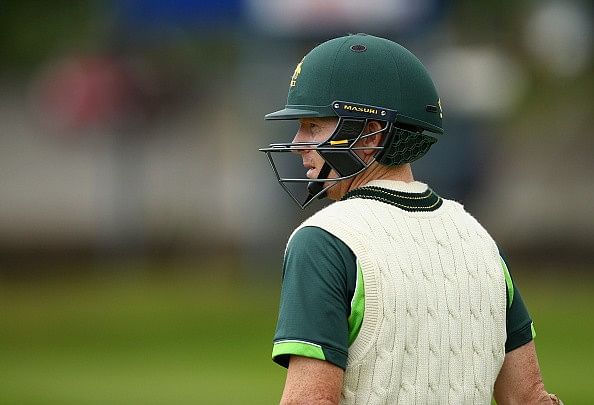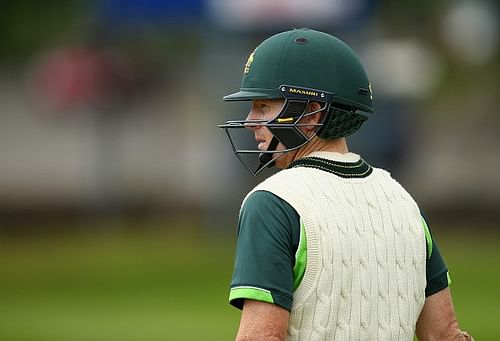
Spotlight back on England as Australia look to surge ahead

The 2015 edition of the Ashes returns to Edgbaston in Birmingham, which was the venue of the fabled “Greatest Test Ever”, in 2005, which England won in thrilling fashion by just two runs, and also the equally celebrated 1981 Test, in which Ian Botham inspired England to victory.
Edgbaston last hosted an Ashes Test in 2009 - the game was heavily curtailed by rain and ended in a damp draw. The series stands level at 1-1, with Australia winning the last game at Lord’s by an emphatic 405 runs, while England won earlier in the month at Cardiff by 169 runs.
Form Guide:
Australia:
Australia’s “Dad’s Army” have received the injection of youth they were desperate for in two young, up-and-coming cricketers, 23-year old fast bowling all-rounder Mitchell Marsh and 29-year old wicketkeeper and Brad Haddin’s protege at New South Wales, Peter Nevill.
Nevill had a dream debut at Lord’s, scoring some handy runs and plucking a few prodigious catches. He looks set to be Australia’s first-choice keeper for at least a while. Mitchell Marsh broke partnerships with his bowling, performing the perfect fifth bowler’s job, and also showed immense promise with the bat in the warm-up games. Shane Watson and Brad Haddin look nowhere close to their best and will surely have a difficult time resurrecting their Test careers.
The Australians come into the third Test after having won the second in roaring fashion by 405 runs, brimming with confidence, and a destructive pace attack (which dismantled England for 103 in the second innings), and two centurion batsmen.
Mitchell Johnson found incredible pace and bounce on a relatively flat deck at Lord’s, and will definitely be a huge factor in this series when in form. He forms a lethal pace battery along with the persistently troublesome Josh Hazlewood and the express quick Mitchell Starc, who has erased any doubts over his fitness.
The Australian bowling looks formidable enough to more than compensate for a woefully out of form Michael Clarke and an off-colour Adam Voges. But the batting will rely heavily on the top three: Warner, Rogers and Smith, easily the best three batsmen in the side right now.
England:
Alastair Cook’s men will unquestionably have felt jolted by an abrupt turnaround from the Australians after their thorough and comprehensive all-round victory at Cardiff. England have panicked after being mauled at Lord’s by a tremendous margin and have made a couple of forced changes: Jonny Bairstow came in for Gary Ballance, and Ian Bell has been moved up to number three.
Bairstow has plundered runs in the English county circuit and has justified his selection ahead of Ballance, who has shown a glaring weakness against pace bowling, and the moving ball, in particular. But Bairstow struggled in Test cricket before this: he averages less than 27 after 14 games without a century.
It is left to be seen as to what he can make of his new-found county form, and whether or not he can translate it to the international stage. Bairstow will bat at number five, a relatively comfortable position.
Joe Root has been moved up to number four, with Ian Bell to come at one-drop. Bell averages 35 at number three and 43 overall. At the age of 33, and after 112 Test matches, Bell must finally display some temperament and play cautiously at his new position, as a senior, in a team filled with extremely inexperienced players.
This may be Bell’s last chance in this series to justify the faith shown in him, and it comes at his home county of Warwickshire. Root’s move to 4 isn’t surprising, given his rich vein of recent form and his shotmaking abilities. Some of the greatest batsmen in history have played at this position, and England will hope he can continue to mask their top-order troubles at number four with his outrageous form.
Cook has stressed the importance of having pitches which offer some help to his bowlers after their loss in London. It has been disheartening to watch the in-form seamers Anderson and Broad running in to bowl on straw-coloured, flat decks. England will hope that they get a greener pitch at Birmingham so that swing and seam, traditionally England’s strengths, can come into play.
In The Spotlight:
Michael Clarke has had a terrible last couple of years, and his batting form in the last few series has been wretched. Having battled a potentially career-ending injury during the Border-Gavaskar series earlier this year, he will be keen to rediscover his batting mojo before his spot in the side becomes redundant. As evidenced from the second game, no one’s spot in the side seems to be irrefutable, and the captain is certainly no exception.
Adam Lyth is the sixth opening partner tried for Alastair Cook in the last three years after, in order, Compton, Carberry, Root, Robson and Trott. Nick Compton and Michael Carberry were perhaps even unjustly dropped after short runs in the side. Lyth’s career, though, seems to be headed in precisely the same direction. He has just one fifty-plus score and an average of 25 after four Tests, and a serious issue with the moving ball. England may be looking for a seventh opener in three years after this Ashes if he doesn’t begin to at least get starts.
Probable Playing XIs:
Australia:
1 Chris Rogers, 2 David Warner, 3 Steven Smith, 4 Michael Clarke, 5 Adam Voges, 6 Mitchell Marsh, 7 Peter Nevill, 8 Mitchell Johnson, 9 Mitchell Starc, 10 Josh Hazlewood, 11 Nathan Lyon
England:
1 Adam Lyth, 2 Alastair Cook, 3 Ian Bell, 4 Joe Root, 5 Jonny Bairstow, 6 Ben Stokes, 7 Jos Buttler, 8 Moeen Ali, 9 Stuart Broad, 10 Mark Wood, 11 James Anderson